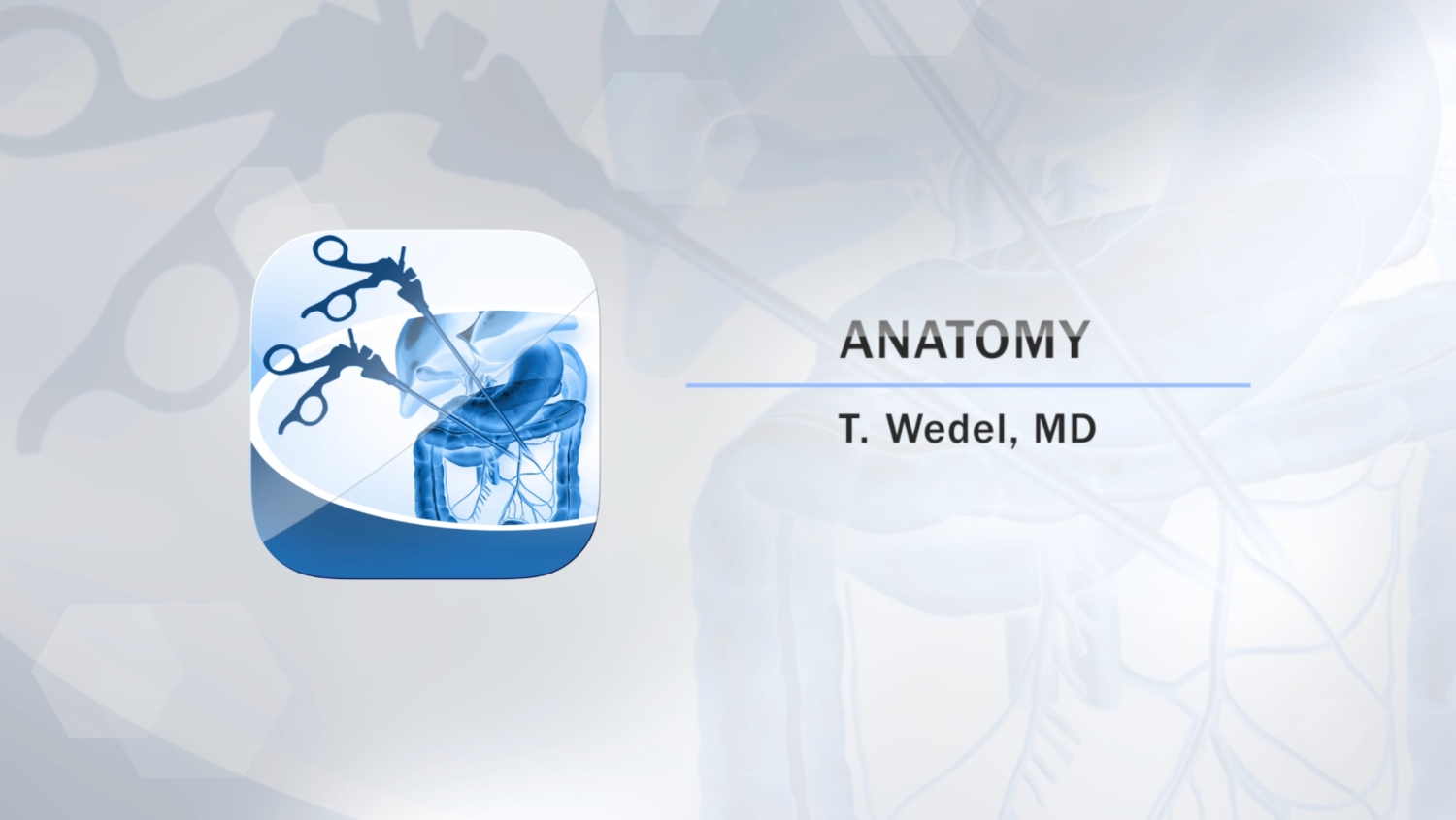Anatomy
Calvin Coffey
Thilo Wedel
Due to the processes of embryological development the gut mesentery is one continuous organ from the ligament of Treitz to the rectum. This leads to the opportunity to separate the lateral and retroperitoneal structures from the mesenteric pedicle package in the middle.

Surgery deep in the pelvis is difficult to perform due to limited working space which is mainly determined by the bony pelvis. Furthermore, during the deepest part of the dissection, an enlarged prostate can further diminish the working space. This can lead to greater manipulation of the cancer specimen and a more difficult TME procedure in general.

The shift from open rectal surgery to a laparoscopic or robotic approach had no impact on the view and orientation of the anatomy of the pelvis with all its delicate structures.
When changing to a bottom-up approach one has to consider that these anatomic landmarks have to be recognized in a different way and sometimes at an earlier stage in the operation. Not only is the same mesorectal plane seen from a completely different perspective, but also the approach to the coccyx, sacrum, prostate/vagina, Denonviller’s fascia and even the urethra is altered, requiring a re-education and a clear understanding prior to undertaking the first TaTME procedure.
Gerhard Buess introduced Transanal Endoscopic Surgery a long time ago; experience in his TEM-approach (Transanal Endoscopic Microsurgery) helps surgeons get used to working in a limited space with instruments close to each other. The same is true for the more recently introduced TAMIS-technique (TransAnal Minimal Invasive Surgery).
However, one big difference is that TAMIS can be performed using standard laparoscopic instruments and with a regular laparoscopic tower.
Both techniques were designed for intraluminal procedures and had only limited application for extraluminal transanal surgery until the TaTME-technique was started.
In the TaTME approach most of the dissection is done in the extraluminal peri-mesorectal plane and therefore knowledge of the bottom up anatomy is crucial for a good result.
For the posterior dissection one has to realize that a steep posterior turn must be made to overcome the sharp angle that exists between the anal canal and the posterior levator ani. On the anterior side, more direct visualization of the prostate and vagina is possible but this dissection can put the urethra at risk if the surgeon is not well trained in the technique. In our experience it’s best to dissect the lateral stalks only after completing the anterior and posterior dissection, using those planes to guide the lateral dissection.
Knowledge of the anatomy, preoperative study of the MRI and intraoperative judgment of the anal canal and related structures is therefore paramount to the surgeon’s success with this technique.
Experience in both TEM/TAMIS-surgery and laparoscopic rectal surgery definately help shorten the learning curve for the TaTME-technique.